INFRASTRUCTURE PROGRESS: Building a new energy economy
by Colin Anthony,
2014-11-20 07:01:49.0
THE Northern Cape brushland around Bokpoort is being transformed into a sparkling field of reflective mirrors to convert solar energy into electrical power. In just more than a year the Bokpoort concentrated solar power plant (CSP) is scheduled to start supplying power to Eskom.
"But hopefully we can start earlier," says Marc Immerman, executive at the Lereko Metier Sustainable Capital Fund.
The early development of the Northern Cape plant was initiated by Immerman and colleague Michael Goldblatt, and will feed 50MW, or in excess of 200 gigwatt hours a year, into the national grid when running at capacity.
That is one of numerous renewable energy projects, mostly solar power but also wind and hydro power, that were approved in the first two rounds of bidding under the renewable energy independent power producers’ programme. Those projects will feed a total of 2,460MW into the national grid, with most set to be operational by 2016. The third round of bidding has been completed but none of those projects have achieved financial closure yet, largely due to Eskom delays, says Steven Hawes, co-founder and CEO of ED Platform, a specialist economic development monitoring and advisory firm. Once those projects are fully operational, Eskom will receive a total of 3,916MW from the independent renewable energy suppliers.
The entire renewable energy programme has had and will continue to have a major effect on SA’s economy. It meets various targets of the NDP, ranging from ensuring sufficient energy supply to job creation and ensuring government infrastructure programmes have 75% local content by 2019.
ED Platform project analyst Joshua Goldin says a total of 35,423 operational jobs will have been created over a period of 20 years, once all projects are up and running. The construction phases will have generated nearly 19,500 jobs. (A job is defined as 12 working months and the operational period of the renewable energy projects is set at 20 years.)
"There is now about 700MW of potential capacity on the grid, which is a relief in the context of the failures of Medupi and Kusile to come online in the originally envisaged timeframes," says Hawes.
The multiplier effects, too, are considerable, with numerous manufacturing plants being established across SA to supply the various components, a consequence of the local content requirements of the renewable energy programme.
These include two R300m wind turbine tower production facilities, one in Atlantis, Cape Town, owned by Spanish group Gestamp, and the other in Coega by South African group DCD. Both are scheduled to be operational by the end of next year. Other manufacturing plants at various stages of development include German company SMA Solar Technology’s solar inverter plant in the Western Cape (which converts the direct current output of the solar panel into the alternating current of the grid); AEG Power Solutions’ solar inverter factory in Milnerton; and Chinese company Jinko Solar’s factory in Epping, Cape Town, capable of producing up to 1,300 PV panels a day. And last month US group SunPower announced plans for a solar panel manufacturing plant, also in Cape Town.
For the Bokpoort CSP operation, shareholders are investment company Lereko, private equity group Metier, power producer Acwa Power, the Public Investment Corporation, Kurisani, a broad-based BEE investment company and a local community trust. The SaudiArabian-based Acwa Power will be running the plant once completed.
The CSP plant is distinctive in that it uses parabolic trough mirrors to concentrate heat to in turn create steam and ultimately drive a turbine. This is significantly different from the simpler and cheaper photovoltaic panels which do not utilise a turbine and are not able to store heat or energy without batteries.
Immerman says the parabolic trough is the most commercially proven of CSP technologies, accounting for 95% of capacity globally. It is equipped with the largest thermal energy storage ever adopted for a solar power plant of this class and capacity in the world.
The entire renewable energy programme is a huge win for SA. Driven by government, it structured the process to ensure that the independent power producers are confident of making profit. It did so not by dictating prices but by setting a ceiling tariff.
And the costs are coming down sharply: the average price per megawatt has fallen from R2027.27 in bid window one to R842 in bid window three, says Goldin. Over the same period, the local content requirement has increased from 12% to 38%.
This new industry was developed successfully because of its transparency, bankability, intense competition and, ultimately, because it meets the corporate profit motive.To paraphrase famous lines from two terrible movies, show them the money and they will come.
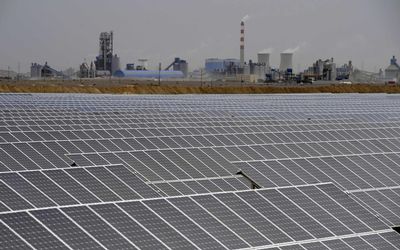
Picture: REUTERS
THE Northern Cape brushland around Bokpoort is being transformed into a sparkling field of reflective mirrors to convert solar energy into electrical power. In just more than a year the Bokpoort concentrated solar power plant (CSP) is scheduled to start supplying power to Eskom.
"But hopefully we can start earlier," says Marc Immerman, executive at the Lereko Metier Sustainable Capital Fund.
The early development of the Northern Cape plant was initiated by Immerman and colleague Michael Goldblatt, and will feed 50MW, or in excess of 200 gigwatt hours a year, into the national grid when running at capacity.
That is one of numerous renewable energy projects, mostly solar power but also wind and hydro power, that were approved in the first two rounds of bidding under the renewable energy independent power producers’ programme. Those projects will feed a total of 2,460MW into the national grid, with most set to be operational by 2016. The third round of bidding has been completed but none of those projects have achieved financial closure yet, largely due to Eskom delays, says Steven Hawes, co-founder and CEO of ED Platform, a specialist economic development monitoring and advisory firm. Once those projects are fully operational, Eskom will receive a total of 3,916MW from the independent renewable energy suppliers.
The entire renewable energy programme has had and will continue to have a major effect on SA’s economy. It meets various targets of the NDP, ranging from ensuring sufficient energy supply to job creation and ensuring government infrastructure programmes have 75% local content by 2019.
ED Platform project analyst Joshua Goldin says a total of 35,423 operational jobs will have been created over a period of 20 years, once all projects are up and running. The construction phases will have generated nearly 19,500 jobs. (A job is defined as 12 working months and the operational period of the renewable energy projects is set at 20 years.)
"There is now about 700MW of potential capacity on the grid, which is a relief in the context of the failures of Medupi and Kusile to come online in the originally envisaged timeframes," says Hawes.
The multiplier effects, too, are considerable, with numerous manufacturing plants being established across SA to supply the various components, a consequence of the local content requirements of the renewable energy programme.
These include two R300m wind turbine tower production facilities, one in Atlantis, Cape Town, owned by Spanish group Gestamp, and the other in Coega by South African group DCD. Both are scheduled to be operational by the end of next year. Other manufacturing plants at various stages of development include German company SMA Solar Technology’s solar inverter plant in the Western Cape (which converts the direct current output of the solar panel into the alternating current of the grid); AEG Power Solutions’ solar inverter factory in Milnerton; and Chinese company Jinko Solar’s factory in Epping, Cape Town, capable of producing up to 1,300 PV panels a day. And last month US group SunPower announced plans for a solar panel manufacturing plant, also in Cape Town.
For the Bokpoort CSP operation, shareholders are investment company Lereko, private equity group Metier, power producer Acwa Power, the Public Investment Corporation, Kurisani, a broad-based BEE investment company and a local community trust. The SaudiArabian-based Acwa Power will be running the plant once completed.
The CSP plant is distinctive in that it uses parabolic trough mirrors to concentrate heat to in turn create steam and ultimately drive a turbine. This is significantly different from the simpler and cheaper photovoltaic panels which do not utilise a turbine and are not able to store heat or energy without batteries.
Immerman says the parabolic trough is the most commercially proven of CSP technologies, accounting for 95% of capacity globally. It is equipped with the largest thermal energy storage ever adopted for a solar power plant of this class and capacity in the world.
The entire renewable energy programme is a huge win for SA. Driven by government, it structured the process to ensure that the independent power producers are confident of making profit. It did so not by dictating prices but by setting a ceiling tariff.
And the costs are coming down sharply: the average price per megawatt has fallen from R2027.27 in bid window one to R842 in bid window three, says Goldin. Over the same period, the local content requirement has increased from 12% to 38%.
This new industry was developed successfully because of its transparency, bankability, intense competition and, ultimately, because it meets the corporate profit motive.To paraphrase famous lines from two terrible movies, show them the money and they will come.



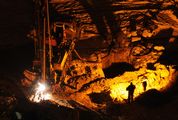
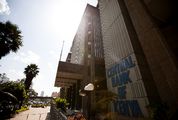
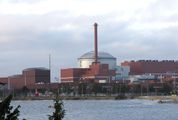


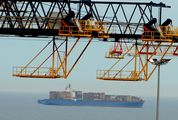
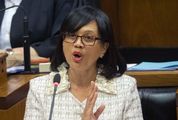
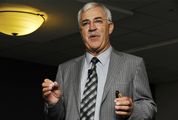









Change: -0.47%
Change: -0.61%
Change: 0.53%
Change: -0.42%
Change: -2.12%
Data supplied by Profile Data
Change: -0.46%
Change: -0.22%
Change: -0.47%
Change: 0.00%
Change: -0.21%
Data supplied by Profile Data
Change: -1.29%
Change: -1.20%
Change: -0.73%
Change: -1.36%
Change: -1.24%
Data supplied by Profile Data
Change: 0.62%
Change: 1.35%
Change: 1.45%
Change: 0.00%
Change: 1.15%
Data supplied by Profile Data